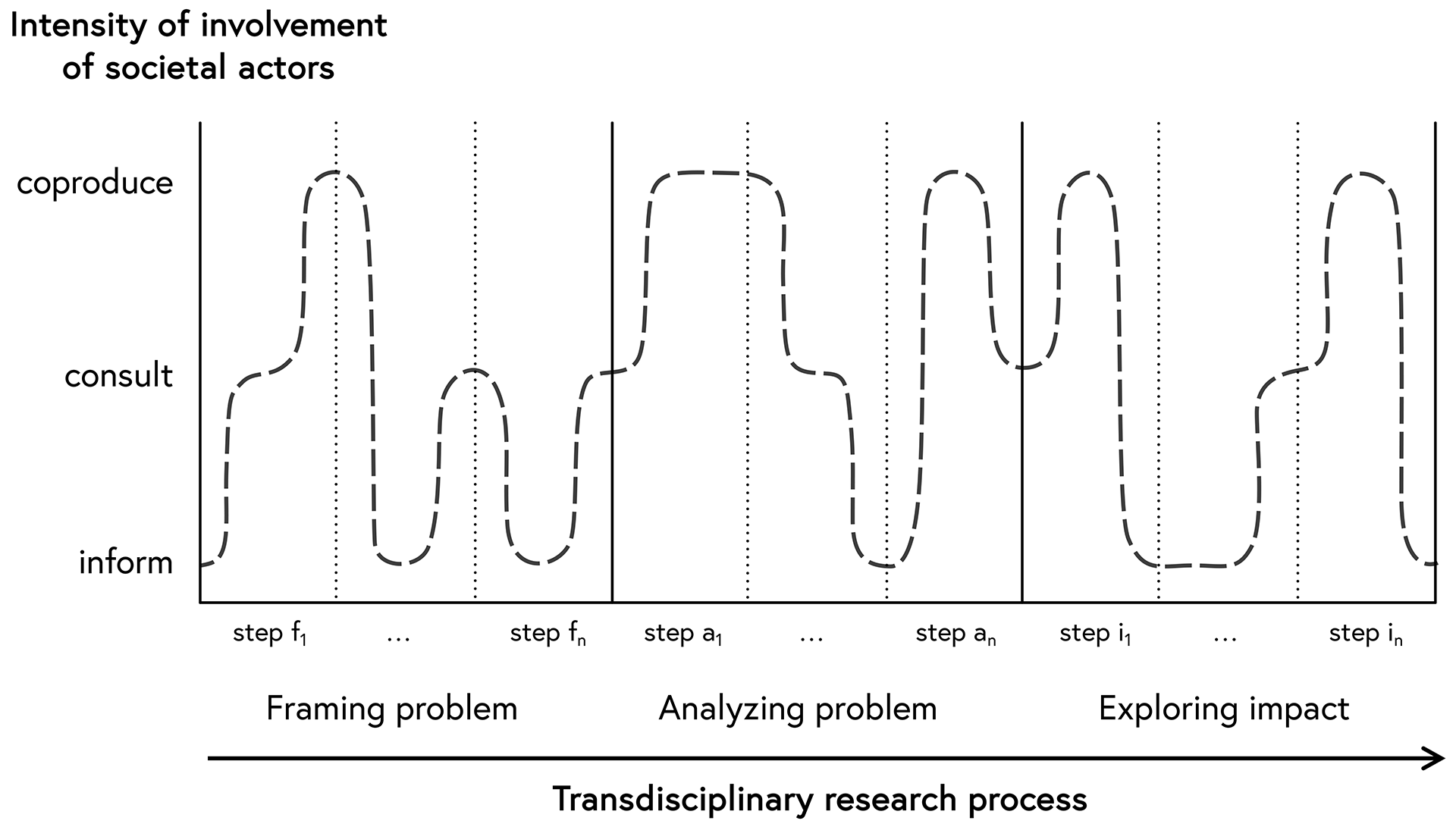KNOWLEDGE PRODUCTION
4.2
Intensities of interaction
Co-production of knowledge – or also co-design or co-creation – is a key characteristic of transdisciplinary research (TDR). Co-production represents an intense degree of interaction, where all involved partners contribute actively to generate new knowledge, debate and design strategies, or craft products and interventions.
However, not every step in a transdisciplinary project is co-production – it is a dynamic sequence of different interaction forms and individual work. For orientation, different degrees of interaction are outlined in this article.
From informing to co-production – different degrees of interaction1
Degrees of stakeholder interaction describe different modes of stakeholder involvement in research and what roles are attributed to them.
- Informing: Lower degrees of stakeholder interaction refer to stages in which stakeholders are mere recipients of knowledge (e.g. one-way information transfer).
- Consultation: Medium degrees refer to stages in which stakeholders are consulted to express their knowledge (e.g. interview or focus group situations).
- Co-production: Higher degrees refer to modes of collaboration in which knowledge is truly co-produced and stakeholders co-shape the research process (e.g. reciprocal learning between researchers and stakeholders, integration of different perspectives).
These interaction degrees draw on Arnstein’s ‘ladder of participation’2 but have been adapted for knowledge production processes based on Mobjörk3 and Stauffacher et al.4
For an overview on intensities of interaction and an explanation of what this implies for the three stages of TDR, please consult the article ‘Promising degrees of stakeholder interaction in research for sustainable development’.
Dynamic process of interaction in transdisciplinary projects
Not every step in a transdisciplinary project is co-production – it is a dynamic sequence of different interaction forms and individual work. The specific sequence of a project depends on the project goals and context conditions. The following criteria help to indicate if high degrees of interaction, specifically a larger number of co-production opportunities, are promising:
- when the project aims to trigger action,
- when it aims to produce all three types of knowledge,
- when actor diversity is high,
- when the issues at stake or the knowledge is contested,
- when several actor groups are interested in the issue at stake (otherwise they may not be willing to collaborate), and
- when many new relations have to be established.
Intensities of interaction. (Based on Stauffacher et al. (2008), Pohl et al. (2017))
Author: Tobias Buser
-
Schneider, F. & Buser, T. (2018): Promising degrees of stakeholder interaction in research for sustainable development. Sustainability Science, 13, 129–142. ↩
-
Arnstein, S. R. (1969): A ladder of citizen participation. Journal of the American Planning Association, 35, 216–224. ↩
-
Mobjörk, M. (2010): Consulting versus participatory transdisciplinarity: a refined classification of transdisciplinary research. Futures, 42, 866–873. ↩
-
Stauffacher, M. et al. (2008): Analytic and dynamic approach to collaboration: a transdisciplinary case study on sustainable landscape development in a Swiss prealpine region. Systemic Practice and Action Research, 21, 409–422. ↩
Downloads

